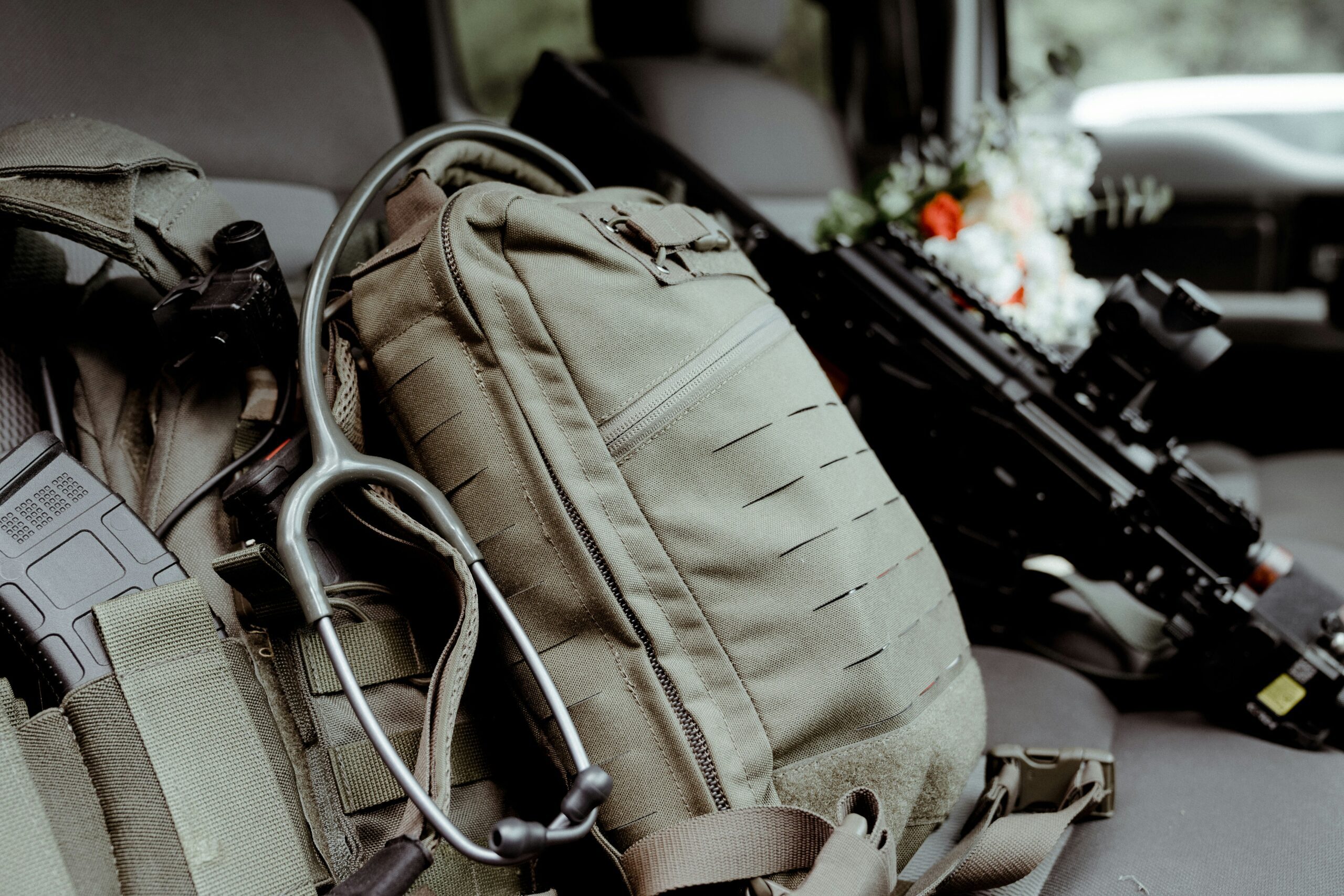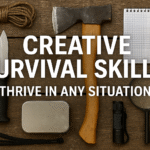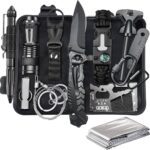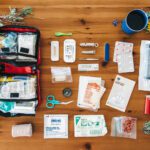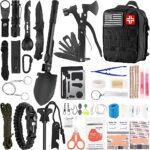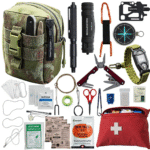Disaster can strike at any moment, and it is essential to be prepared for the worst-case scenario. Whether you are facing a natural disaster, an economic collapse, or a medical emergency, having the right supplies and knowledge can mean the difference between life and death. In this article, we will explore the essential survival needs that everyone should be aware of to ensure their safety.
From emergency supplies to outdoor survival kits, we will provide a comprehensive list of what you need to have on hand in case of an emergency. We will also discuss important topics such as water purification and fire starting techniques. By the end of this article, you will have a clear understanding of what it takes to be prepared for any disaster that may come your way. So sit back, relax, and let’s get started on the journey towards survival readiness!
The Importance of Disaster Preparedness
Natural disasters and emergencies can strike at any time, leaving people stranded without food, water, or shelter. In such cases, being prepared can mean the difference between life and death. For this reason, it is vital to have a disaster preparedness plan in place. One of the most important reasons to prepare for a disaster is to ensure the safety of your loved ones. When disaster strikes, electricity and communication lines may be down. As a result, you may not be able to reach your family members or check on their well-being. Having an emergency plan in place can help you reunite with your loved ones and ensure that everyone is safe. Disaster preparedness also helps reduce panic during emergencies. When people are not prepared for disasters, they tend to panic and make irrational decisions. This can lead to confusion and chaos that can make the situation worse. By preparing ahead of time, you will have a clear understanding of what needs to be done during an emergency, making it easier for you to respond calmly and appropriately. In addition, being prepared for disasters can help minimize damage and speed up recovery efforts after an event has occurred. When people are properly equipped with necessary supplies such as food, water, first aid kits tools etc., they are better able to take care of themselves until help arrives. This allows resources like first responders and rescue teams to focus on those who are most in need of immediate assistance. Overall investing time into preparing yourself and your family before disaster strikes gives peace-of-mind knowing that you’re ready for whatever comes your way
 Emergency Supplies: What You Need to Have on Hand
Emergency Supplies: What You Need to Have on Hand
Emergencies can happen at any time, and having the right emergency supplies on hand can mean the difference between life and death. These supplies can provide you with the essential tools needed for survival in an emergency situation. Here are some of the key emergency supplies that you should have on hand:
Water
One of the most critical emergency supplies is water. The human body can only survive a few days without water, so it’s essential to have a supply of safe drinking water available. Experts recommend that you should store at least one gallon of water per person per day for at least three days.
Food
Another vital piece of emergency equipment is food. In an emergency, you may not have access to fresh food, so it’s important to have non-perishable food items that will last for several months. Canned foods, dry goods like pasta and rice, and energy bars are excellent options.
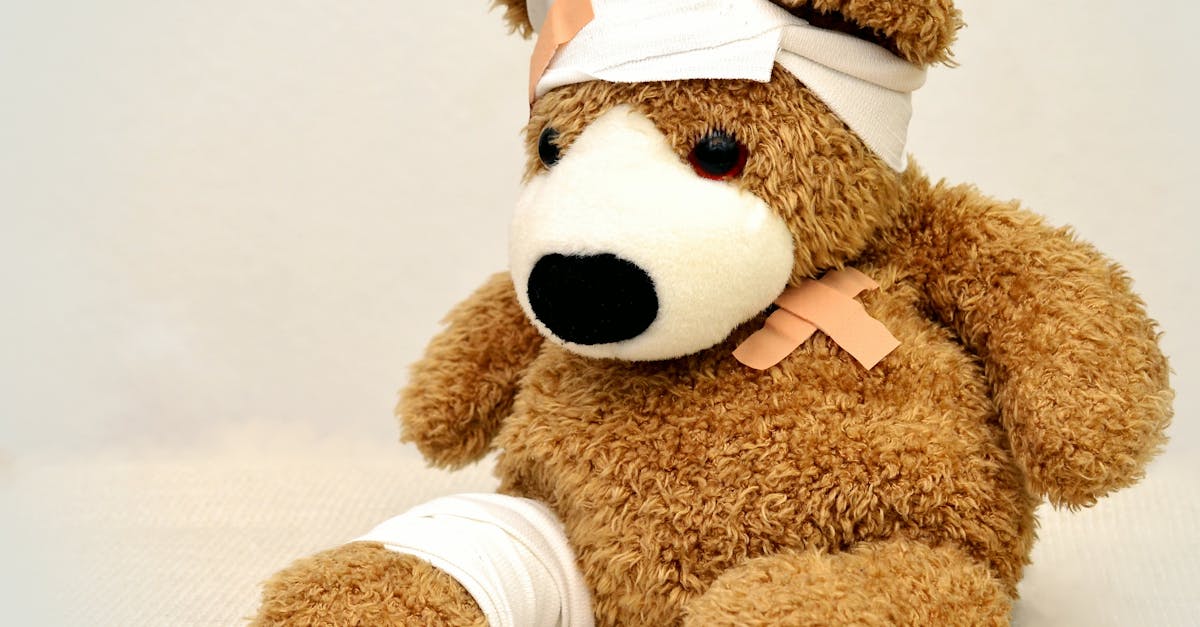 First Aid Kit
First Aid Kit
A well-stocked first aid kit is another must-have item for your emergency supplies. It should include bandages, antiseptics, pain relievers, scissors, tweezers, and other medical essentials. Having a comprehensive first aid kit can help you treat minor injuries quickly before they become more severe. In conclusion, having adequate emergency supplies ready in case of an disaster is crucial because emergencies often happen when we least expect them. Water and food are indispensable and should be stored in sufficient quantity. A well-provisioned first aid kit is also necessary to tend to injuries if they arise. Being prepared with these essential survival items will help ensure that you and your loved ones remain safe during challenging times.
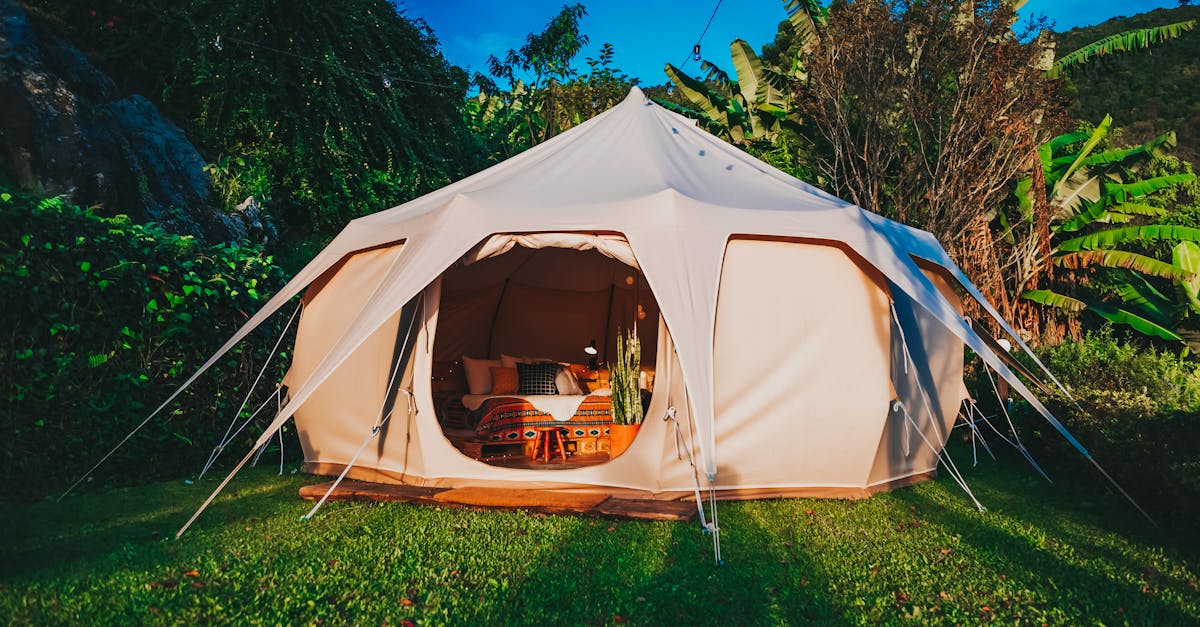 Essential Survival Supplies: A Comprehensive List
Essential Survival Supplies: A Comprehensive List
Shelter Supplies
In a survival situation, finding or creating shelter is one of the most critical tasks you will face. Here are the essential supplies you need to stay safe and comfortable:
- Tarp or tent – A good quality tarp or tent can protect you from rain, wind, and sun.
- Sleeping bag – Look for a sleeping bag with a rating that is appropriate for the climate you will be in.
- Sleeping pad – This not only makes sleeping more comfortable but also insulates your body from the cold ground.
- Rope – Useful for setting up shelter and securing gear.
- Duct tape – Can be used to patch holes in your shelter or gear.
Remember that staying dry is crucial for maintaining body temperature and avoiding hypothermia. Make sure your shelter supplies are waterproof and durable.
Food Supplies
In a survival situation, food is essential both for energy and morale. Here are some essential food supplies:
- Canned goods – Canned foods have a long shelf life and provide necessary nutrients.
- Dried fruits and nuts – These are lightweight, non-perishable, and provide essential vitamins and minerals.
- Jar of peanut butter- High protein content ensures that even small amounts can keep hunger at bay.
- MREs (Meals Ready to Eat) – Convenient meals designed for military use that can last up to 5 years on the shelf.
While it’s important to have enough food supplies to meet your needs, try not to over-pack as it will add unnecessary weight to your pack.
First Aid Supplies
Injuries can happen at any time, and having a first aid kit on hand can mean the difference between life and death. Here is a list of essential first aid supplies:
- Bandages – Assorted sizes to cover cuts and scrapes.
- Antiseptic wipes – To clean wounds and prevent infection.
- Tweezers – For removing splinters or ticks.
- Gauze pads – For larger injuries that require more than a Band-Aid.
- Medical tape- To keep gauze pads in place.
If you have prescription medication, make sure to pack enough for the duration of your trip plus a few extra days just in case. Additionally, consider taking a first aid course before setting out into the wilderness so you are better prepared for emergencies.
Outdoor Survival Kits: What to Include and Why
When it comes to outdoor survival, having a well-stocked survival kit is essential. The kit should contain all the necessary items for survival in an emergency situation. Here are some of the things you should include in your outdoor survival kit:
Shelter
A good shelter is vital for outdoor survival, especially if you are caught in a storm or other extreme weather conditions. Your shelter could be a tent, tarp, hammock or bivy sack. You should also include some paracord or rope that you can use to set up your shelter quickly.
You may also want to pack a sleeping bag that’s suitable for the weather conditions you expect to encounter. A sleeping pad will keep you warm and comfortable while sleeping on hard ground.
Water and Food
In an emergency situation, access to clean water is crucial for survival. You should include a water filtration system or purification tablets in your outdoor survival kit. As for food, pack non-perishable items such as protein bars, trail mix, dried fruits, and nuts.
Pack enough food and water supplies that will last at least 72 hours but aim for more if possible. Pack more than what you think you need so that you don’t run out of food or water during an emergency.
Navigational Tools
If lost in the wilderness during an emergency situation, having the right navigational tools can help get back on track towards civilization quickly. A map and compass are two essential tools that should be included in your kit along with GPS devices such as handheld GPS units or smartphones with downloadable maps offline.
You should also bring along a whistle as it helps rescuers locate you quickly when lost or injured. An emergency whistle is louder than the human voice, and the sound carries farther distances.
Having a well-stocked outdoor survival kit can make all the difference in an emergency situation. By including shelter, water and food, navigational tools, and other essential items, you can be better prepared for whatever nature throws your way.
Survival Gear: Equipment You Need for Survival
When it comes to emergency situations and wilderness survival, having the right gear can make all the difference. The following items are essential for anyone who wants to be prepared for anything:
Axe or Hatchet
An axe or hatchet is an essential tool for chopping firewood, building shelter, and processing game. Look for a sturdy and durable option with a comfortable grip. A good axe will last you a long time.
Axe safety is important – always use it carefully and never leave it unattended.
Knife
A high-quality knife is one of the most important pieces of survival gear. You’ll need it to prepare food, build shelter, dress game animals, and much more. Look for a knife with a sharp blade that’s easy to handle.
In case of emergency, remember that learning how to make your own knife out of rocks or other materials could save your life.
A multipurpose tool like a Leatherman or Swiss Army Knife can be incredibly helpful in survival situations. These tools usually come with pliers, screwdrivers, scissors, saws, and other useful features that can come in handy when other tools aren’t available.
Remember that while these tools are versatile they’re not perfect – use them appropriately and don’t assume they’ll do everything you need them to do perfectly.
Water Purification: How to Ensure Safe Drinking Water
One of the most important survival needs is access to clean drinking water. In a disaster, municipal water systems can fail, making it necessary to find other sources of water. However, many natural water sources such as rivers, streams and lakes may contain harmful bacteria or parasites that can make you very sick or even cause death. Therefore, it is critical to know how to purify water so that it’s safe for consumption.
Boiling
One of the most effective ways to kill bacteria and viruses in water is by boiling it for at least one minute. This method only requires a heat source and a pot or container in which to boil the water. Allow the boiled water to cool before drinking.
Creative Tip: Boiling can also help purify suspect food before eating if there is no other way available.
Filtration
A filtration system removes sediment, debris and some bacteria from standing or running fresh-water sources. Some portable filters use UV light along with activated carbon filters while others use ceramic filters with carbon core filtering.
Creative Tip: Choose a filter based on your specific needs for capacity, durability and chemical purification enhancements. A good filtering system will last you through many emergencies
Chemical Treatment
Two common chemicals used in treating contaminated drinking water are iodine tablets and chlorine drops. Follow the manufacturer’s instructions on how much chemical per gallon of untreated or purified source you need.
Creative Tip: Make sure you have extra tablets on hand because iodine loses its effectiveness over time due to exposure from light and humidity; replace them every 12 months.
Knowing how to purify water can mean the difference between life and death in a survival situation. Whether you’re boiling, filtering, or chemically treating water, always consider the source of the water and the environment in which it was found. By having a reliable water purification system in place, you can satisfy your body’s most essential survival need: clean drinking water.
Fire Starting: Techniques and Tools for Starting a Fire
Fire starting is one of the most important survival skills to learn. It provides warmth, light, and is essential for cooking food and purifying water. There are many techniques for starting a fire, each with its advantages and disadvantages.
Techniques
The most common technique is using a lighter or matches. However, it is essential to have backup methods if they fail or run out. A ferrocerium rod or fire starter tool can provide sparks by striking a metal rod against a scraper blade, igniting tinder materials like dry grasses or cotton balls. Flint and steel can also be used by striking them together to create sparks that ignite the tinder.
Another method is the hand drill technique where friction creates heat that ignites the tinder material. This technique requires practice and patience to master but can be effective with proper preparation.
Tools
The choice of tools depends on several factors such as location, time available, weather conditions, and personal preference.
A knife is an essential survival tool that can assist in gathering materials like wood shavings for kindling or creating feather sticks that help speed up ignition time. A magnesium block can be scraped to create shavings that ignite quickly when struck with a ferrocerium rod.
A fire piston works similarly to a diesel engine; compressed air creates heat that can ignite fine tinder material.
It’s important to note that all tools require proper handling and safety precautions when in use.
Creative Content
In ancient times, our ancestors discovered how to make fire from natural sources using primitive techniques like rubbing two sticks together vigorously until they ignited into flames. Today we have advanced technology at our fingertips, but the art of fire starting remains an essential survival skill to learn. It connects us to our roots and reminds us of the simple, yet fundamental needs that make us human.
Food Storage: How to Store and Preserve Food for Survival
In a survival situation, having access to food is critical. But what happens when the food you have runs out? The solution is to store and preserve food. By following proper storage techniques, you can ensure that your food lasts longer and is safe to eat.
Choose the Right Containers
When it comes to storing food for survival, choosing the right containers is key. You want a container that is airtight, watertight, and durable. Ideally, your containers should be made of materials that are resistant to pests and rodents as well.
Some recommended container options include glass jars with rubber seals, metal cans with tight-fitting lids, plastic buckets with gamma seal lids, and mylar bags. When using plastic containers or bags, make sure they are BPA-free and safe for storing food.
Packaging Techniques
The way you package your food can also impact its shelf life. For example, oxygen can quickly degrade certain foods like nuts or grains. A vacuum sealer removes excess air from bags or containers; this helps extend the shelf life of many foods up to five times longer than traditional packaging methods.
If you don’t have a vacuum sealer available in a survival situation try layering in oxygen absorbers every time you pack dried fruits or nuts into an air-tight container like glass jars with rubber seals or metal cans with tight-fitting lids. Oxygen absorbers remove oxygen from packages creating an environment where bacteria cannot survive therefore preserving your stored foods longer.
Cool Temperature Storage
Cool temperature storage can help extend the shelf life of many types of foods significantly. Most perishables should be kept at or below 40 degrees Fahrenheit while many dried or canned goods can be stored at room temperature. It’s important to note that optimal storage temperature varies by food type.
You can keep foods cool in several ways, including using a root cellar or underground storage area, burying a cooler in the ground, or using a natural stream or water source to keep food cool. Alternatively, you could also invest in a portable cooler and rotate frequently between storing it on ice and refridgerating it with items from the ground storage area.
Storing food properly is an essential part of disaster preparedness. By choosing the right containers, packaging your food correctly, and keeping it cool, you can ensure that your food stays safe to eat for months or even years.
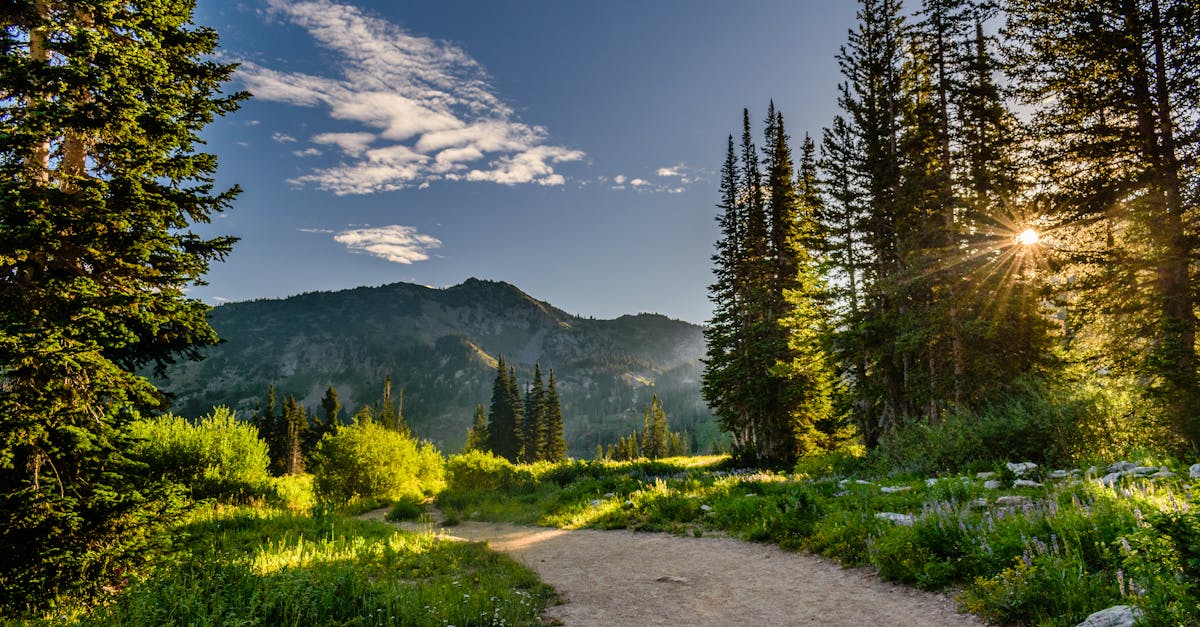 Tips for Staying Safe and Surviving in the Wilderness
Tips for Staying Safe and Surviving in the Wilderness
1. Know Your Surroundings
Before heading out, research the area you plan to visit. Learn about the terrain, weather patterns, and wildlife common to the area. This knowledge will help you prepare for potential dangers and make wise decisions when faced with challenges.
Additionally, carry a map and compass or GPS device with extra batteries. These tools can help keep you on track if you get lost.
In case of an emergency, know how to signal for help using a whistle or signal mirror. Three loud blows on a whistle is the universal sign for distress.
2. Stay Nourished and Hydrated
In order to stay energized and focused while in the wilderness, it’s crucial to keep your body hydrated and nourished with proper nutrition.
Carry enough food that will sustain you for the duration of your trip plus extra in case of emergency situations. Pack non-perishable items such as dried fruits, nuts, energy bars or trail mix.
Water sources can be scarce in some wilderness areas so always carry a water filtration system or purification tablets as a backup plan just in case of contamination.
3. Dress Appropriately
Dressing appropriately is key especially when camping at high altitudes where temperatures can drop significantly during evenings. Wear synthetic materials that wick moisture from your skin such as woolen socks to keep feet warm and dry at night. Pack rain gear even if weather forecast says there won’t be any rain – mother nature can change her mind at any time. Also wear light clothing so it’s easier to move around unhindered by heavy layers which can restrict physical movement – especially while exploring difficult terrains.
By following these basic tips, you can stay safe and survive in the wilderness. Remember to always be prepared and exercise caution when faced with unfamiliar situations.
Conclusion
In conclusion, being prepared for any emergency situation is crucial in order to survive. By having the essential survival supplies discussed in this article, you will have a better chance of staying safe and healthy during an emergency. Remember to always stay calm and focused, assess your situation, and use your knowledge and resources to make smart decisions. With proper preparation and planning, you can face any challenge with confidence and resilience. Stay safe out there!

